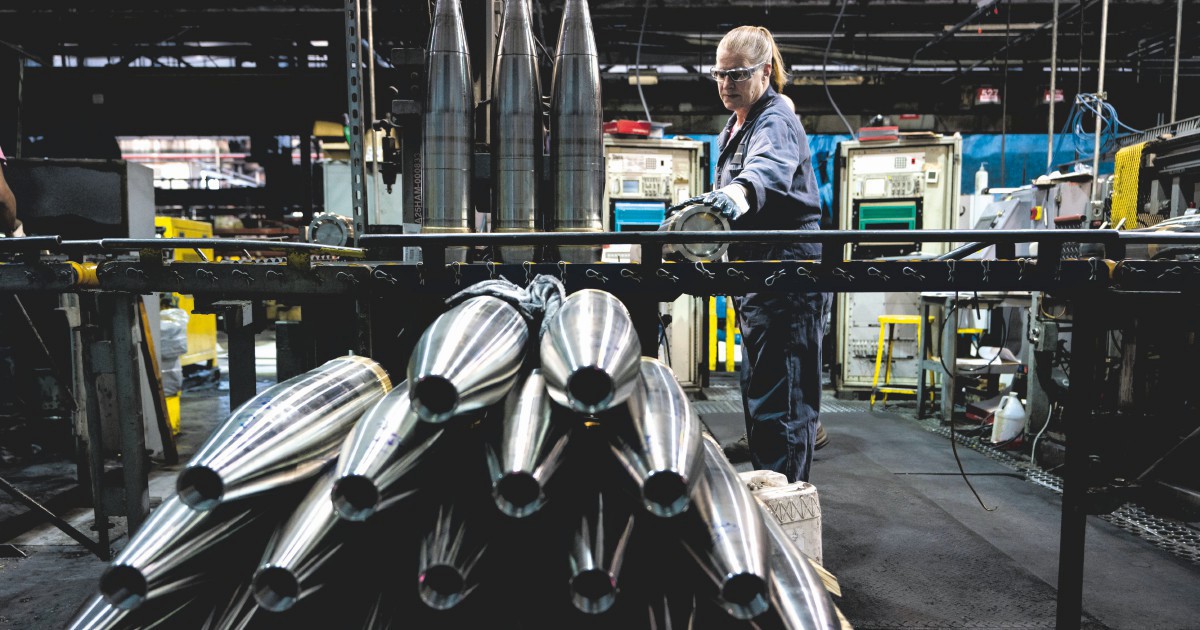“We are seeing, shall we say, opportunities for international sales… Naturally also due to tensions in Eastern Europe. I am fully convinced that we will obtain benefits”. It is January 25, 2022, one month before the Russian invasion of Ukraine began. Greg Hayes, president and chief executive officer of Raytheon Technologies, one of the largest multinationals in the world in the defense and aerospace sector, thus answers an analyst’s question on business prospects in the arms sector, during the call to present the company’s results for the fourth quarter of 2021. Speaking of the various scenarios of global tension, from the Middle East to the Indo-Pacific, Hayes specifies that in the event of “hostilities” the “benefit would not be immediate”, because initially there would be a “reallocation of the arsenals already available”. But we would still be expected “a recovery of international defense spending in the continuation of 2022 and beyond”, in particular in 2023.
Probably the top manager thought that these considerations would remain confined to the audience of investors he was addressing, instead they have been made public by the US research center Quincy Institute for Responsible Statecraft. They are a perfect synthesis of the business of war. To really pay off, it needs to be long. In fact, Greg Hayes’ prediction has come true: in 2022, world military spending has reached a record figure of $2.24 trillionwith a growth of 3.7% in real terms compared to the previous year, according to the Stockholm International Peace Reserach Institute (Sipri): in just one year, defense budgets have increased by a good 127 billion. A boom driven precisely by the Ukrainian crisis.
The Russian “Special Operation” in Ukraine, since its inception in February 2022, has in fact recorded a high “attrition of materials”, as well as human beings. Weapon systems are destroyed every day and will then have to be replaced if we want to keep fighting. The West and primarily the Americans, since 2008, have been supplying the Ukrainian military with equipment and training, with the aim of bringing them up to a level Nato. The conflict is therefore big business for the European and overseas arms industries. Indeed, the armed forces of the European countries most involved in supplies had and have very little to give. This situation has been exploited by countries belonging to the Atlantic Alliance, but which in the past were members of the Warsaw Pact and therefore still equipped with weapon systems of Soviet origin. These systems were traded to the Ukrainians for more modern Western-made weaponry. There Poland sent his own to Ukraine T-72 tanks and will receive from United States 116 M-1A1 Abrams as compensation.
American companies are the masters, being able to guarantee faster orders than Europeans. Furthermore, Washington provides the political cover that the companies of the Old Continent lack. However there are European industrial realities which, in the Ukrainian crisis, play a role that is anything but passive. The German Rheinmetall, which has a branch in Rome, has achieved a strong share price increase since the beginning of the year, as much as 38 points. The upsurge occurred after the declarations of the managing director Armin Papperger regarding the huge order for the supply to Ukraine of 35×228 mm shells fired by the German Gepard anti-aircraft self-propelled guns.
German industry is particularly active. The Berlin government, in May, commissioned the Krauss-Maffei the construction of 18 MBTs (Main Battle Tanks) Leopard 2A8, as a replacement for the Leopard 2A6s given to the Kiev forces. The order includes a further option for the supply of 105 wagons. Berlin plans to involve other allied countries in need of upgrading their armored component in this option. The first interest came from the Czech government, which has already entered into negotiations with Krauss-Maffei for the construction of around seventy Leopard 2A8s. The Swedish government’s intention to double the number of wagons is recent news Strv 122 (updated local version of Leopard 2A5) offered in Kiev with 10 more examples and Spain will supply 10 more Leopard 2A4s in two separate lots (6+4). These tanks will most likely be replaced, in their respective armies, by as many Leopard 2A8s manufactured by Krauss-Maffei.
However, the most active NATO country in the acquisition of new armaments is Poland, which is equipping itself with one of the most powerful armies in Europe. We have already mentioned the American replacement of 116 M-1A1s, but the largest tank order – not seen since the Cold War – will be placed in Asia. The South Korean Hyundai Rotem has signed an agreement with the Warsaw government to supply a thousand specimens of the tank K-2 Black Panther, of which 180 were built under license in Poland. Still a Korean company, the Hanwha Defensewill supply Warsaw with 122 self-propelled artillery units AHS Krab da 155/52 mm.
Washington certainly hasn’t been watching. 500 mobile rocket/missile launchers are ready for delivery M-142 HIMARS (High Mobility Artillery Rocket System), the same supplied by the Americans to the Ukrainians, and 250 tanks M-1A2 SEPv3 Abramswith turret front panels in Impoverished uranium. It is one of the latest versions of the tank produced by General Dynamics Land Systems. The latter order had already been agreed with the United States before the invasion. The war in Eastern Europe is therefore revitalizing a market that seemed by now defunct with the end of the Cold War.
by Tiziano Ciocchetti and Mario Portanova
Read the complete investigation on FQ MillenniuM on newsstands and in our shop from Saturday 8 July
